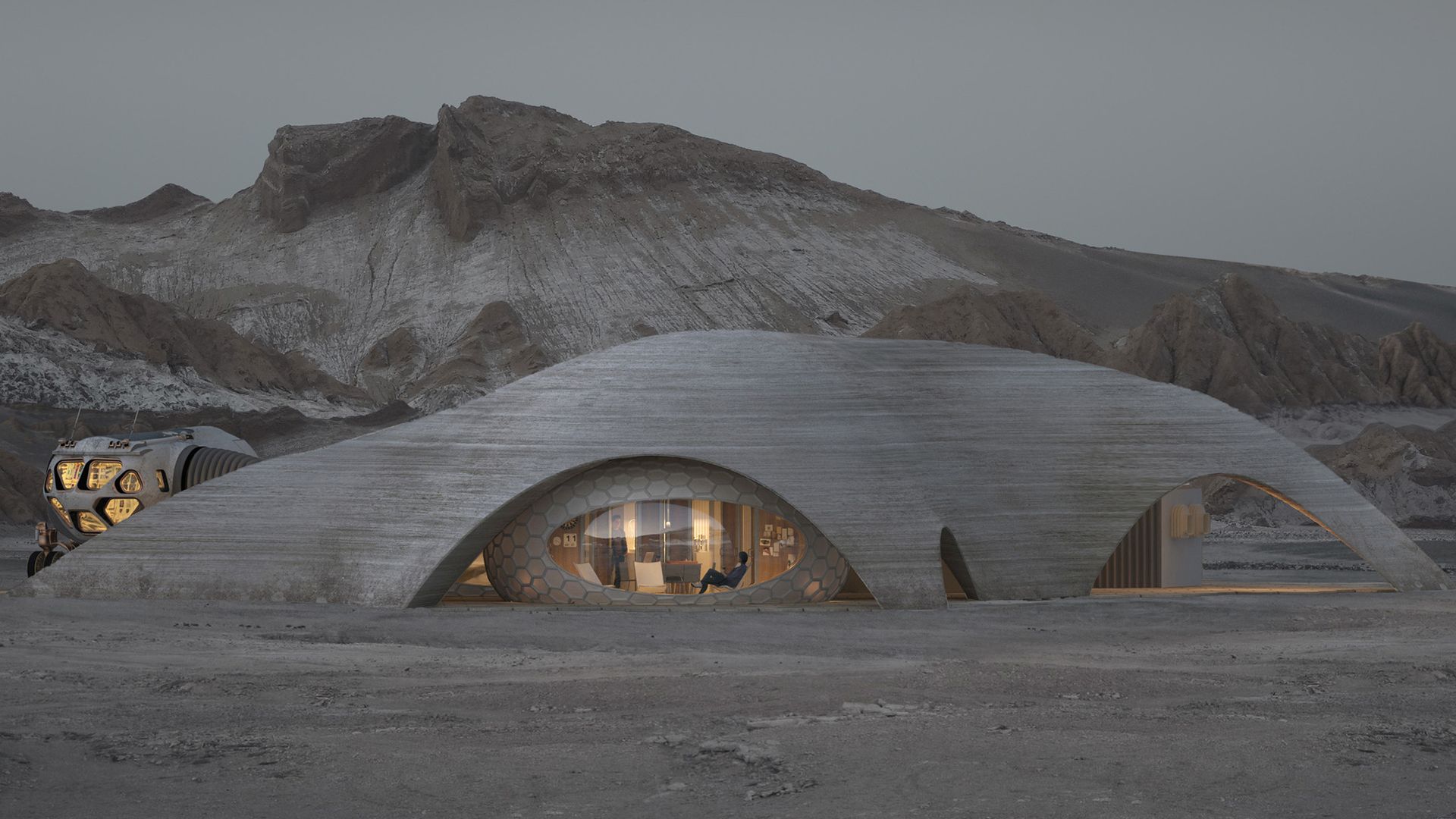LUNAR HABITAT: Design for Extreme Environments as a Driver of Architectural Innovation

Mars Habitat, Hassell Studio
ARC3018HF
Fall 2024 Thesis Seminar
Instructor: Brady Peters
Studio Collaborator: Xavier DeKestelier, Head of Design Technology, Hassell Studio
Meeting Section: L0109
Wednesdays 9:00 a.m. - 12:00 p.m.
The challenge of this studio is to design a habitat for humans on the Moon.
This challenge requires architects to consider and undertake research in several areas: engineering structures able to withstand extreme environments, designing for physical and psychological well-being, developing innovative fabrication techniques, inventing robust and practical attitudes towards sustainability, and conceptualizing new narratives for future dwelling beyond earth.
“The moon’s a mean old bitch. She doesn’t care why your suit fails. She just kills you when it does.”
- Andy Weir (Artemis)
Extreme environments lack critical resources or involve hostile environmental challenges. Building in extraterrestrial environments requires us re-think architecture from first principles: gravity is different, we are no longer protected from lethal solar radiation, and there is no atmosphere, so there is no survivable “outside”. There are not only dangers from environmental threats, but also psychological ones. It might seem that the success of space habitation would be all about technology, but it’s not. It’s also how people live and interact every day. It is critical that habitats are built robustly, but also in a way that encourages human interaction, and enable humans not just to survive, but to thrive.
“We can keep space crews alive and working productively in the confines of space craft, but we have not yet learned how to give them a home away from home.”
- James Wise (from “Space Habitats and Habitability”)
But how will we build these new habitats? As it costs about $4,000 to launch a kilogram of material to low Earth orbit, it is clear that it we can’t bring much building material from earth. We will need to use native materials, and this theory is called “In Situ Resource Utilization” (ISRU). Through the combined use of computational design and digital fabrication we will investigate the architectural tectonics of new lunar habitats. The physical necessities of living and working in the lunar environment promotes a robust attitude towards radical ecological thinking. The success of habitats will rely on concepts such as structural and material efficiency, a reliance on renewable energy such as solar power, the selection of appropriate sites and building forms, and new attitudes towards consumption, recycling, and the promotion of a circular economy. This studio presents an opportunity not only to learn about sustainability for lunar habitats, but enable us to reflect upon what we need to do to make architecture sustainable on the Earth.
"We came all this way to explore the Moon, and the most important thing is that we discovered was the Earth".
- Bill Anders (reflecting on his famous photograph, Earthrise 1968)
One may question the premise of this studio as being very distant from the meaningful concerns of an architect’s everyday practice, distant from the discipline of architecture, and distant in terms of time. However, it is not – this is happening now. Leading architecture firms such as SOM, BIG, Foster + Partners, and Hassell Studio, together with new design and technology companies such as AI Spacefactory, ICON, and SEArch+ are actively working to develop new projects for space, lunar, and Martian habitation. Private companies like SpaceX, BlueOrigin, Virgin Galactic, Redwire, Pisces, and countless others are actively pursuing various aspects of moving humans off-earth. In this studio, we will work with one the world’s leading space architects, Xavier DeKestelier.
In the Fall semester, students will research building and living extreme environments (including space) and learn the architectural methods needed to develop new knowledge. In the Winter semester, students will apply their research knowledge to the design of a lunar habitat. A studio trip is planned (hopefully in the Fall) to visit: NASA’s Johnson Space Center in Houston, Texas; Prof. Vittoria Netti at the International Center for Space Architecture at the University of Houston; and, ICON’s “Space Lab” in Austin, Texas.

